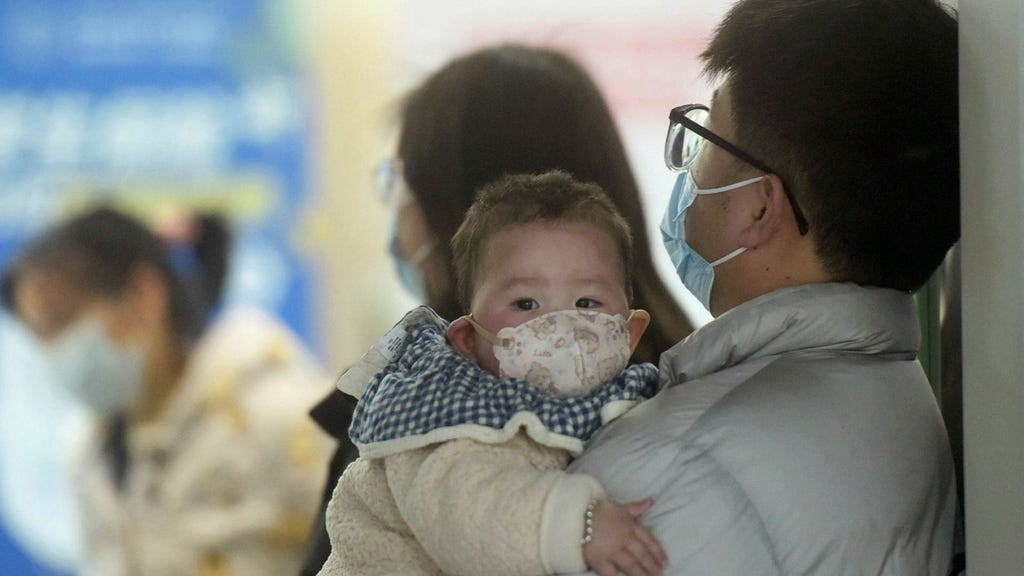A Resurgence of HMPV in China and Beyond: Understanding the Virus and its Implications
China is currently grappling with a significant surge in human metapneumovirus (HMPV) infections, particularly among children. This upswing has sparked considerable concern, especially on social media platforms, prompting local authorities to acknowledge the outbreak and emphasize the importance of preventative hygiene measures. While the current epicenter is China, the virus’s reach extends beyond its borders, with increased cases reported in countries like India and Malaysia. The situation is further complicated by the concurrent circulation of other respiratory viruses, including COVID-19 and influenza, adding to the strain on healthcare systems.
HMPV, a member of the Paramyxoviridae family and a close relative of the respiratory syncytial virus (RSV), is not a novel pathogen. Although formally identified in 2001, research suggests a longer history of circulation among humans. Like its relative RSV, HMPV primarily affects the respiratory system, causing a range of symptoms from mild cold-like ailments, such as cough, runny nose, and fever, to more severe conditions like bronchiolitis (inflammation of the small airways in the lungs) and pneumonia. While most individuals experience mild illness, vulnerable populations, including children, the elderly, and those with compromised immune systems, are at higher risk of developing severe complications. The virus typically follows a seasonal pattern, causing epidemics in the Northern Hemisphere during the winter months.
Transmission of HMPV occurs primarily through close contact with infected individuals, via respiratory droplets expelled during coughing or sneezing, or through contact with contaminated surfaces. Currently, there are no specific antiviral treatments or vaccines available for HMPV. Supportive care, such as oxygen therapy, is administered in severe cases to manage respiratory distress.
The current surge in China raises concerns about the potential for a wider global spread. However, unlike the emergence of COVID-19, HMPV is not a new virus. Its established presence and prior circulation among human populations suggest a degree of pre-existing immunity within communities. Even though the specific variant currently circulating in China may be novel, it is likely related to earlier strains, making a pandemic scenario less probable. Pandemics typically arise from the introduction of entirely new viruses to the human population, often through zoonotic transmission (animal-to-human spread). Currently, there is no known animal reservoir for HMPV, further reducing the likelihood of a pandemic. Nevertheless, experts in Europe emphasize the need for more comprehensive data on the circulating strain in China to fully assess the potential risks.
The ongoing surge in HMPV infections underscores the importance of continued vigilance and public health measures. While the virus is not new, its impact can be significant, particularly on vulnerable populations. Preventative measures, such as frequent handwashing, respiratory etiquette (covering coughs and sneezes), and avoiding close contact with sick individuals, remain crucial in mitigating the spread of HMPV and other respiratory viruses. Further research and surveillance are essential to better understand the evolving dynamics of HMPV, including the characteristics of circulating strains and the potential for future outbreaks.
The concurrent circulation of multiple respiratory viruses, including HMPV, COVID-19, and influenza, presents a complex challenge for healthcare systems. The overlapping symptoms of these infections can complicate diagnosis and treatment, emphasizing the need for comprehensive diagnostic testing and clinical management strategies. Public health messaging should focus on promoting preventative measures that are effective against a range of respiratory viruses, empowering individuals to protect themselves and their communities. As we navigate this complex landscape of respiratory viral infections, vigilance, preparedness, and ongoing research will be critical in mitigating the impact of these viruses on global health.














